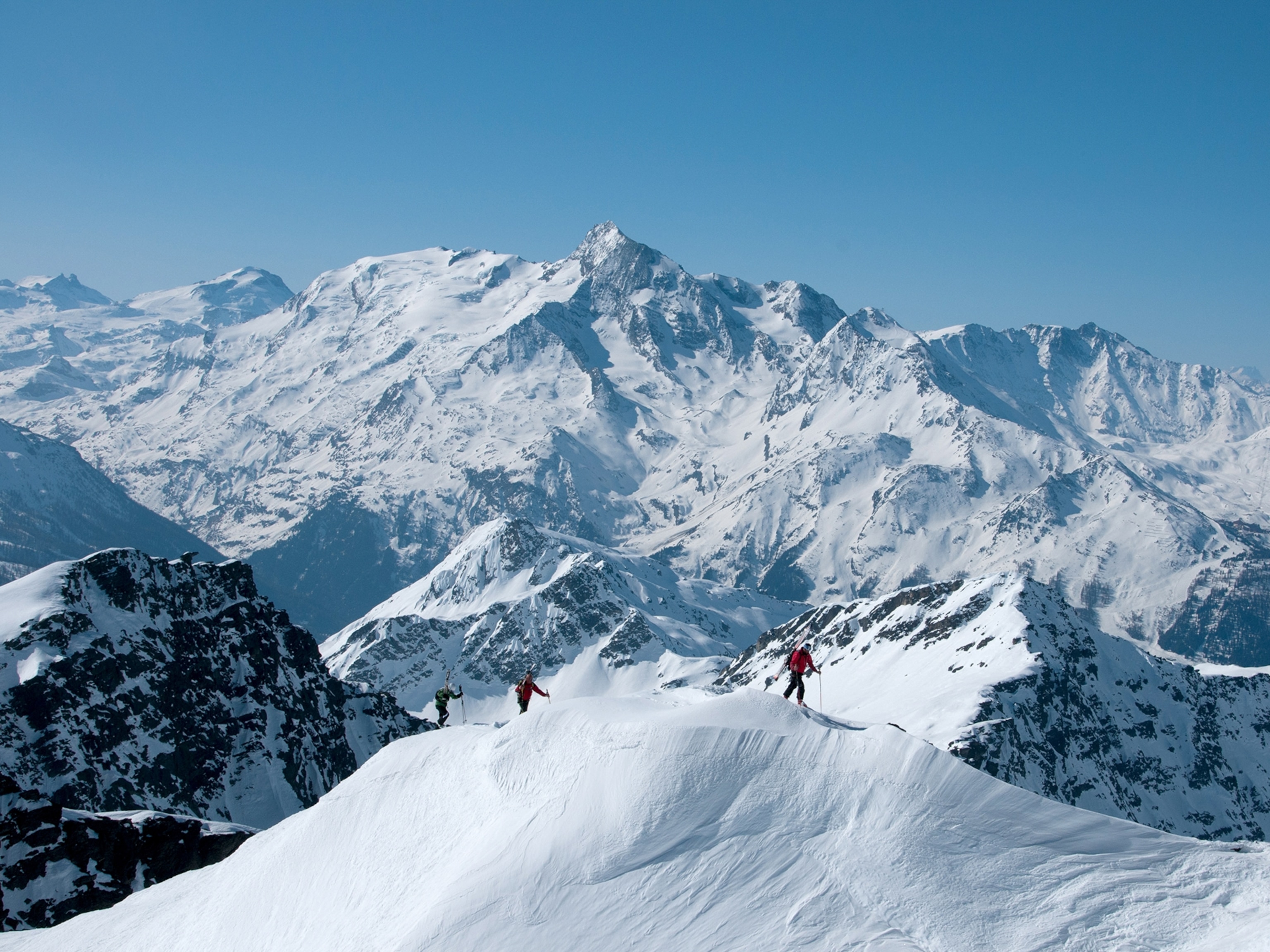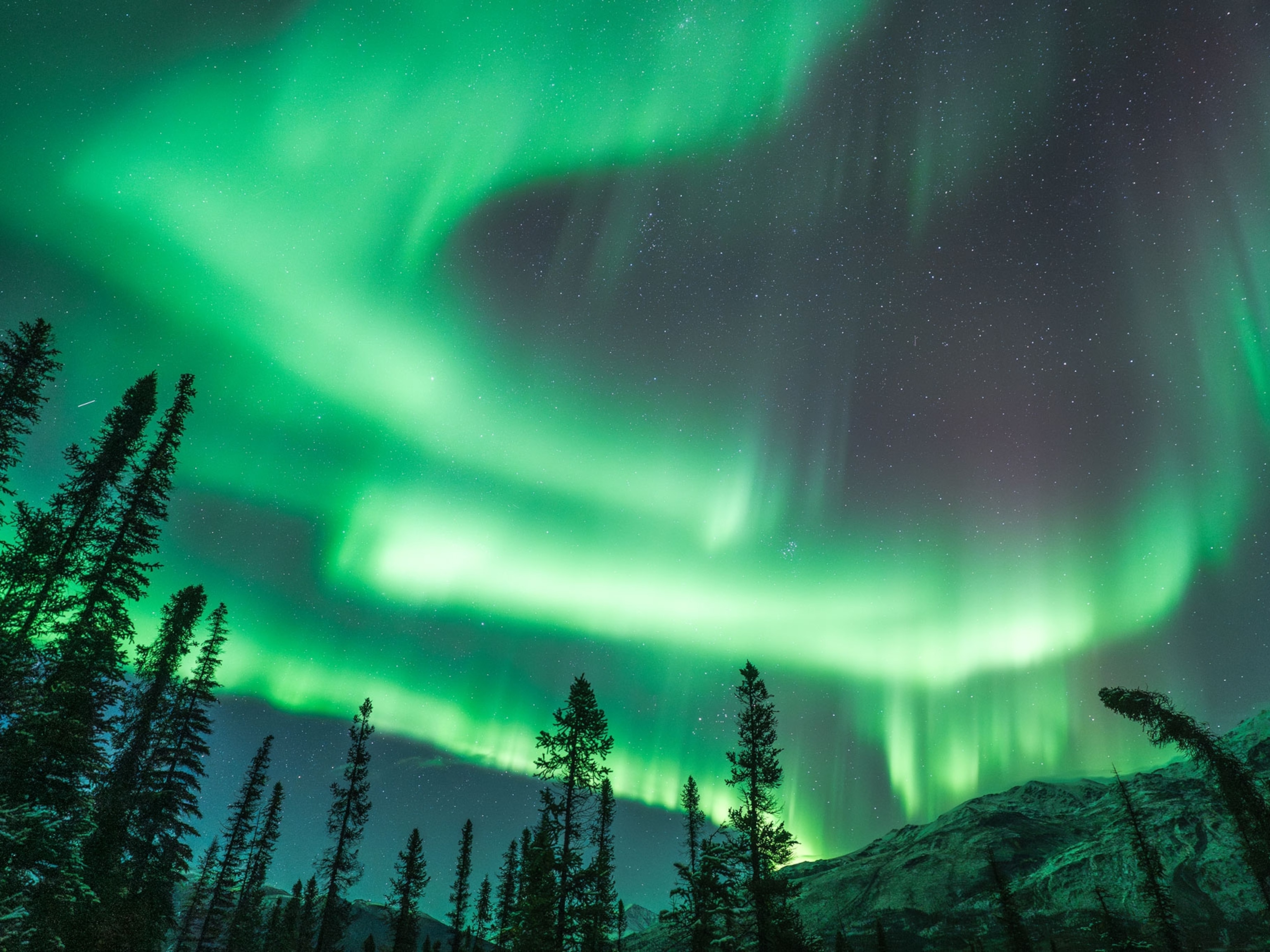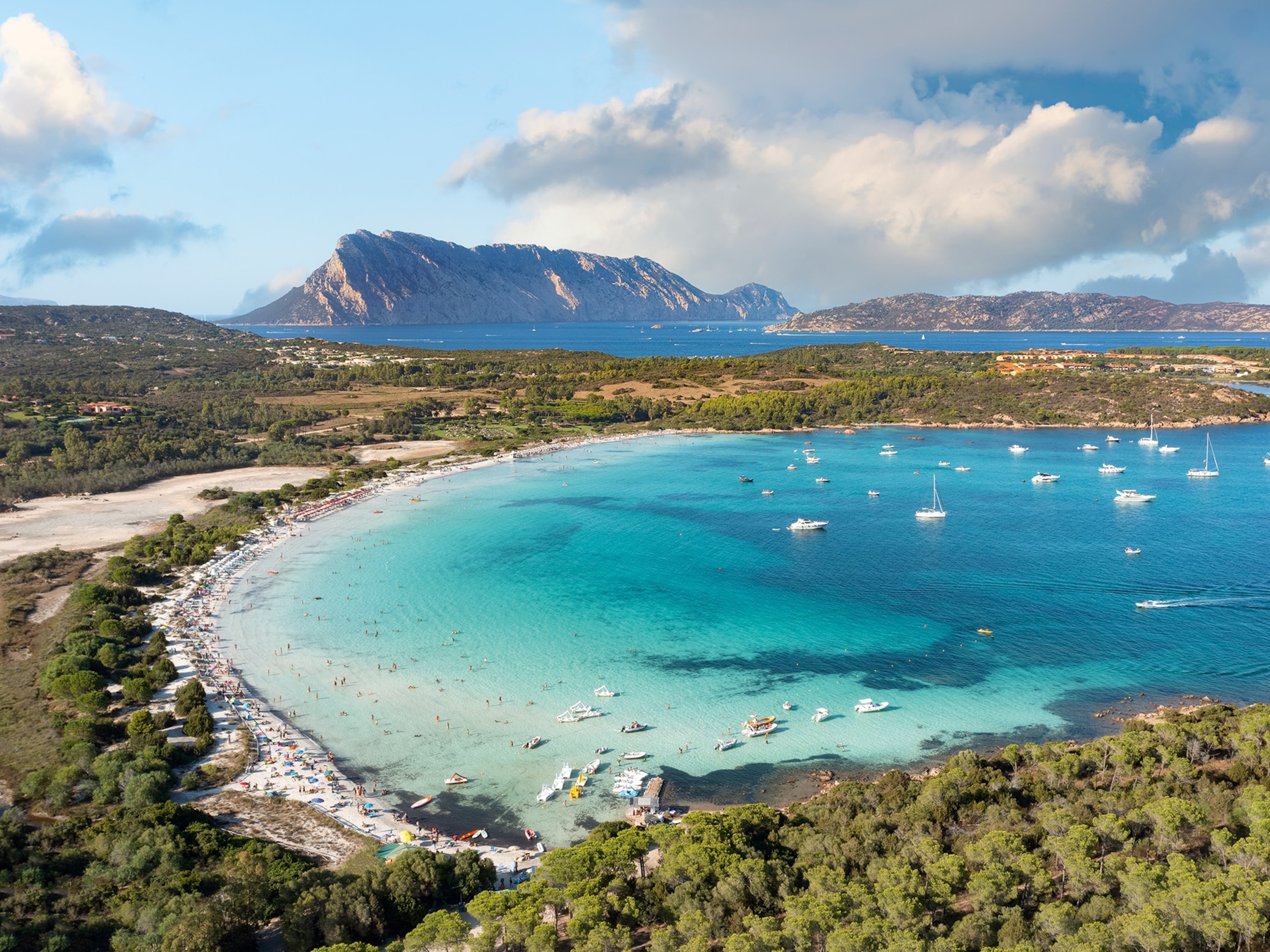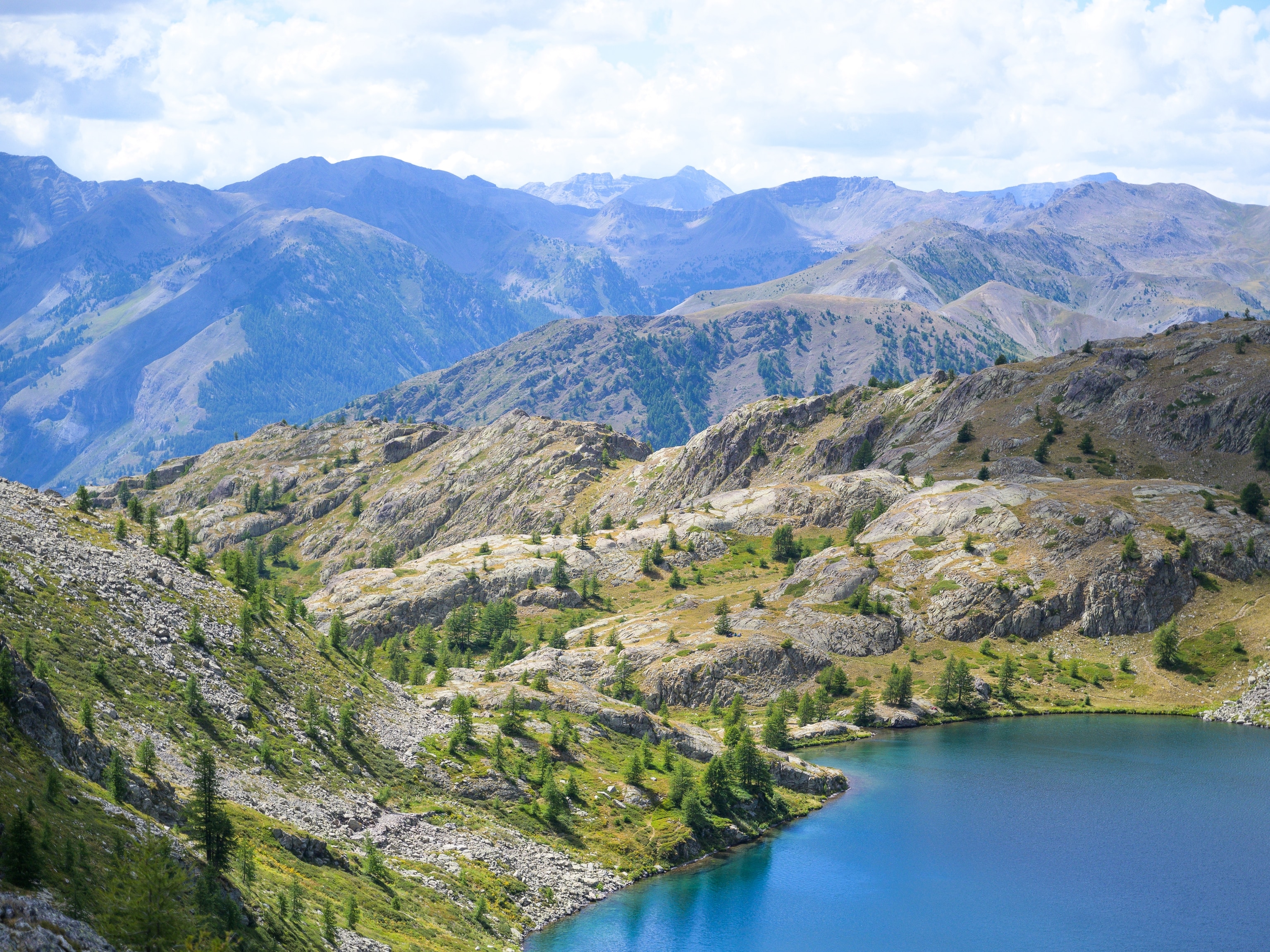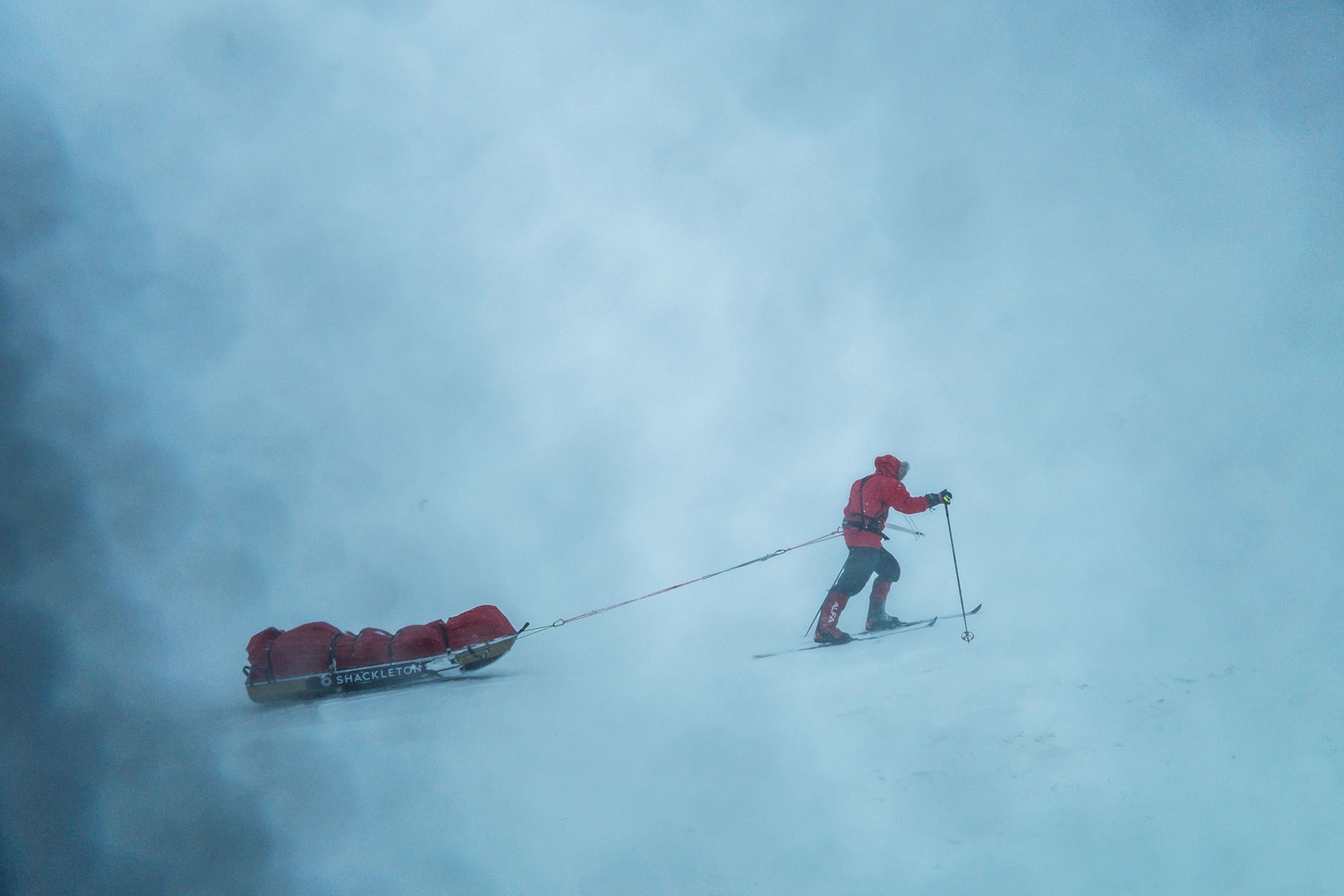
Antarctic explorers enter no-rescue zone
Facing whiteout storms, severe weight loss, and dwindling food supplies, two adventurers enter crucial stretch in their race across the frozen continent.
On the 43rd day of his solo expedition across of Antarctica, two days after crossing the South Pole, Louis Rudd came across other human beings. Researchers from the station at the pole, they were puttering along in motorized, over-snow vehicles and, as you do when in the empty vastness of the frozen continent, they all stopped to chat. A woman asked if Rudd could remove his goggles and face mask for a photograph.
“I think she probably regrets saying that,” Rudd said in his daily website update that night. The unrelenting wind and cold had wreaked havoc on Rudd’s lips and the inside of his mouth, leaving them, in his description, “a mass of pus and blood.”
“Oh, you’re bleeding,” the woman exclaimed.
It doesn’t help that this Antarctic “summer” has had some of the snowiest and most difficult conditions polar veterans have ever seen, forcing several seasoned adventurers to abandon lesser expeditions.
“Just a bit,” Rudd said, before adding vampirically, “I’ve been drinking my blood all day.”

You’ll have to forgive Rudd for his grotesque pleasantries, he’s barely seen another human being in well over a month of trudging across the planet’s most barren and inhospitable landscape. It doesn’t help that this Antarctic “summer” has had some of the snowiest and most difficult conditions polar veterans have ever seen, forcing several seasoned adventurers to abandon lesser expeditions.
Only three days earlier Colin O’Brady, the young American competing with Rudd to be the first person to ski solo and unsupported across the great white void of Antarctica, had reached the South Pole after 40 days and 566 miles of skiing from the Atlantic Coast. Typically skiers headed for the pole can see the monolithic Amundson-Scott Station across the icy pan of the Antarctic Plateau for days before reaching it. But with wind-whipped, whiteout conditions, O’Brady was forced to follow his compass for days through empty white space until the American research facility apparated before him.
- National Geographic Expeditions
With his seemingly bulletproof good cheer, O’Brady described arriving at the pole in subzero temperatures in his daily Instagram post as, “One of the best days of my life.”
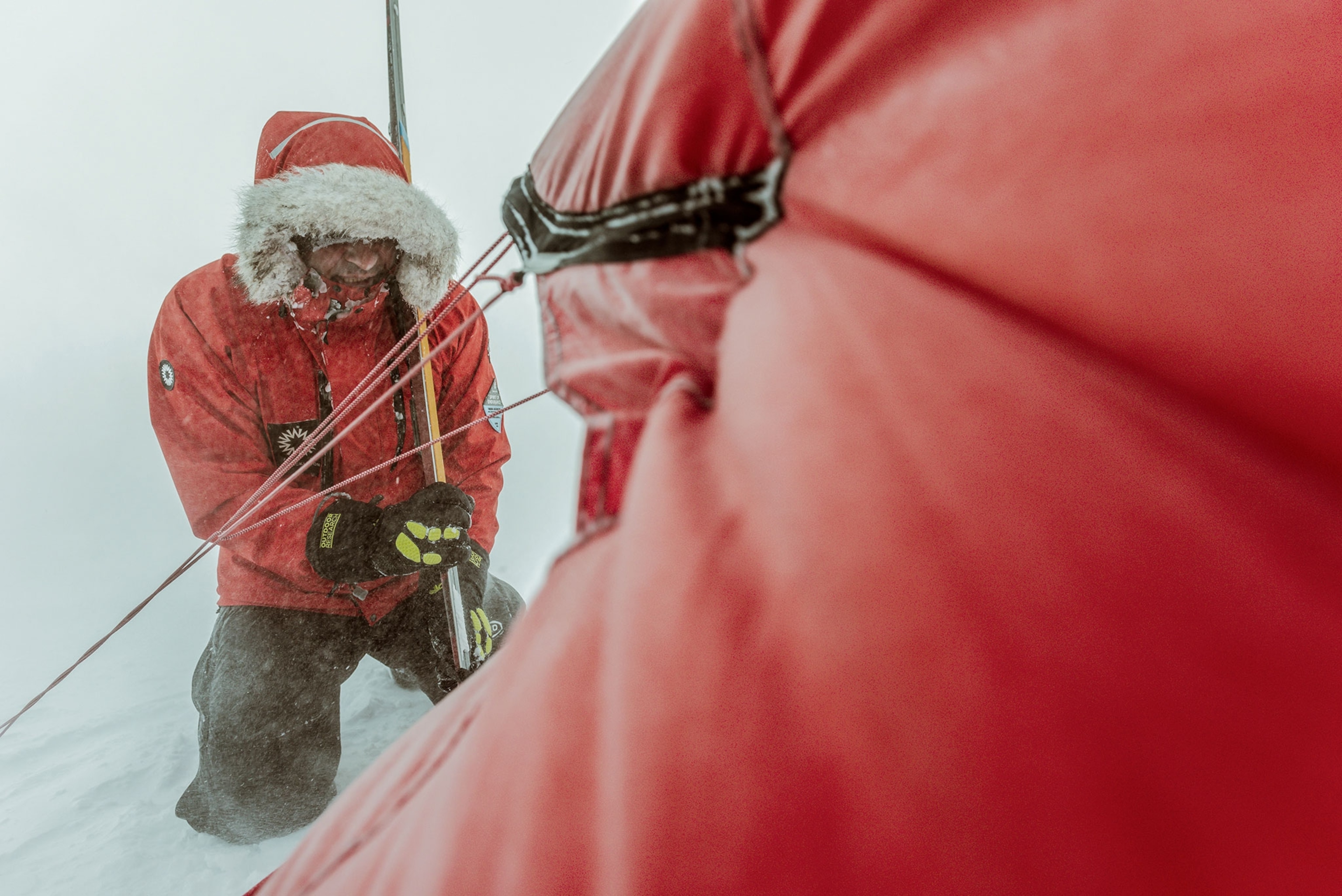
When the weather finally broke that afternoon and the sun appeared for the first time in days, O’Brady gushed, “I was overcome with one of the deepest feelings of happiness and calm that I have ever experienced. I truly felt I was tapping into all of the love that was being sent my way from all over the world.”
Meanwhile, Rudd, a full day and a half behind was feeling less sanguine. As he pushed ahead into the whiteout, staring at his compass for 11 hours straight, he said in his daily update, “I used the time...to reflect on my performance so far on the expedition and was feeling quite self-critical.” After all, this was a man who’d trained and fundraised for nearly a year to be first to do this, to honor his friend Henry Worsley, to reclaim the storied heritage of British explorers. Yet here was an upstart young American arriving in the eleventh hour, with less polar experience, beating him to glory. It’s no wonder Rudd admitted to contemplating, “Could I push harder? Is there more I could do?”
By day’s end, however, he had redirected his negative thinking, as anyone striving to achieve great and difficult things must do. By his calculations he was making better time with a heavier pulk than when he skied the route two years previous while leading a team of British veterans (a trip that featured sensible things like rest days and resupplies). He was also older now, only months away from 50. In his nightly update he reported contentedly, “I think I am doing as much as I possibly can. I’ve still got over 300 nautical miles to go, so I don’t want to go crazy and push way too hard.”
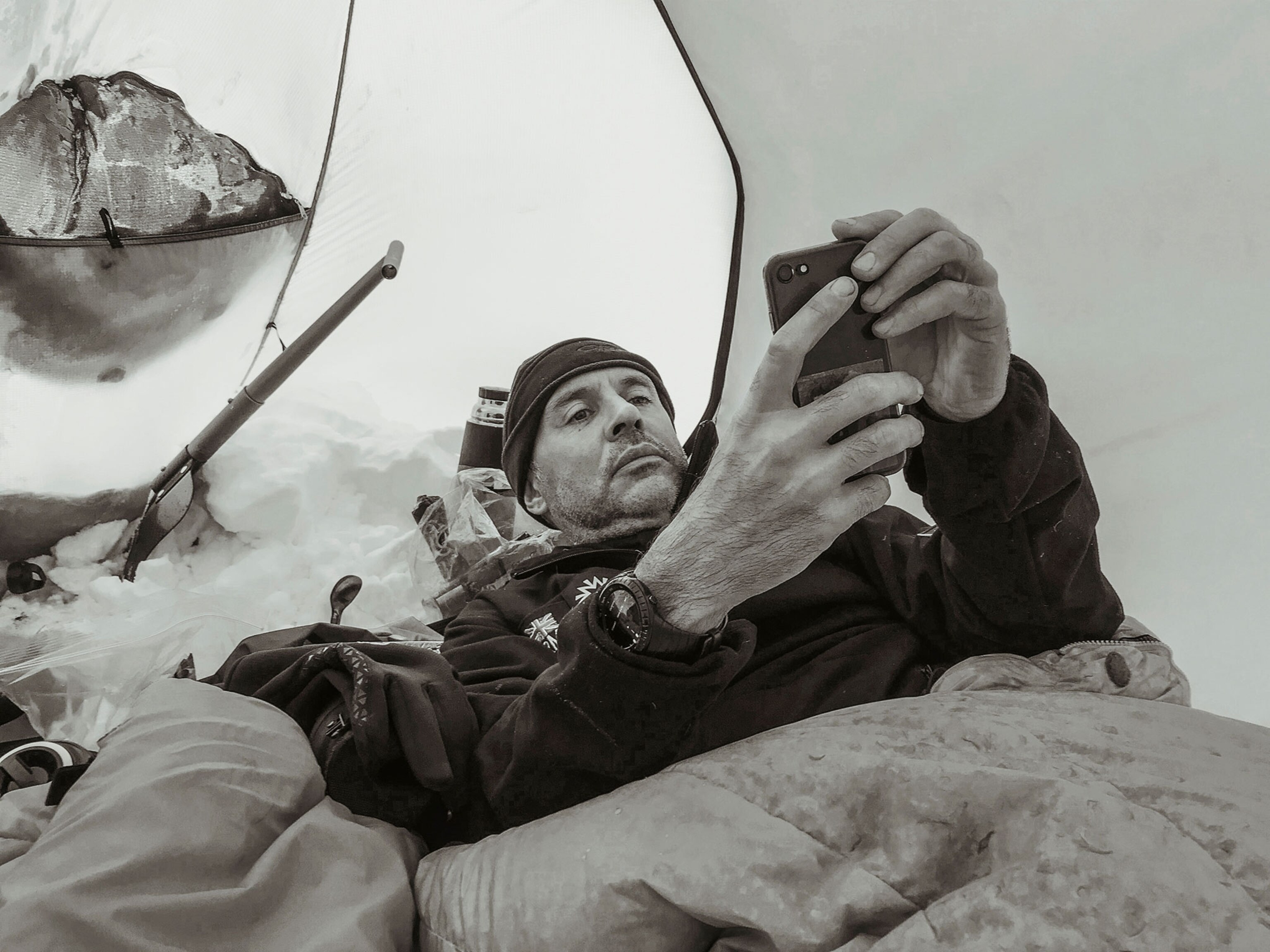
A day and a half later he, too, followed his compass bearing through a whiteout until the outline of a radar installation emerged, a sign of the scientific facilities at the pole and what he called an, “Incredible feeling to finally see something and realize I was getting there.” Upon Rudd’s arrival, many members of the Amundson-Scott Station, who’d been following the expedition’s media coverage, disgorged into the frigid air. Everyone wanted a photo with him, which he said, “Made me feel like quite a celebrity.” Rudd took some photos but didn’t linger. As he told National Geographic in an interview conducted via satellite phone, he sublimated any desire to go inside the heated research station with its nearly 100-degrees warmer air, determined not to do anything, “that could jeopardize my unsupported status.”
He was in the white world of subzero temperatures again, skiing atop a polar icecap 9,000 feet thick, the single largest mass of ice on the planet. It’s an experience Worsley described as, “Like being an atom on an ice cube.”
As the pole was the best place to pull the plug before skiing into the remaining 300-plus miles of wintry wilderness, he took time to perform a dynamic risk assessment, carefully examining his remaining supplies of food and fuel. This is the same juncture at which the last person to attempt a solo traverse, fellow Brit Ben Saunders, abandoned his effort, realizing his 13 days of food was insufficient to proceed safely. As Worsley, Rudd’s friend who perished attempting this continental traverse in 2016, had shown, maintaining one’s physical condition in such a perilous environment is critical to survival.
After turning his back to the pole and its alluring taste of civilization, Rudd continued into the frozen desert. He was in the white world of subzero temperatures again, skiing atop a polar icecap 9,000 feet thick, the single largest mass of ice on the planet. It’s an experience Worsley described as, “Like being an atom on an ice cube.”
Meanwhile, O’Brady was in his tent 29 miles away calculating his own stores, sending the numbers to his wife and his mother to help him devise a caloric strategy for the remainder of the expedition. His meticulous master plan relies on hauling and consuming more calories than other Antarctic expeditioners, including Rudd. But just before setting out, the Achilles’ heel of his tactic was revealed: He could barely pull his heavily laden pulk. So he made the potentially fateful decision to leave several days of food behind. Now with little margin for error, alone in a tent on the wind-blasted Antarctic Plateau, he decided he had enough to press on. O’Brady wrote in the day’s Instagram post on December 16th, “I have to be very disciplined now as I have just enough to hopefully get me to the end.”
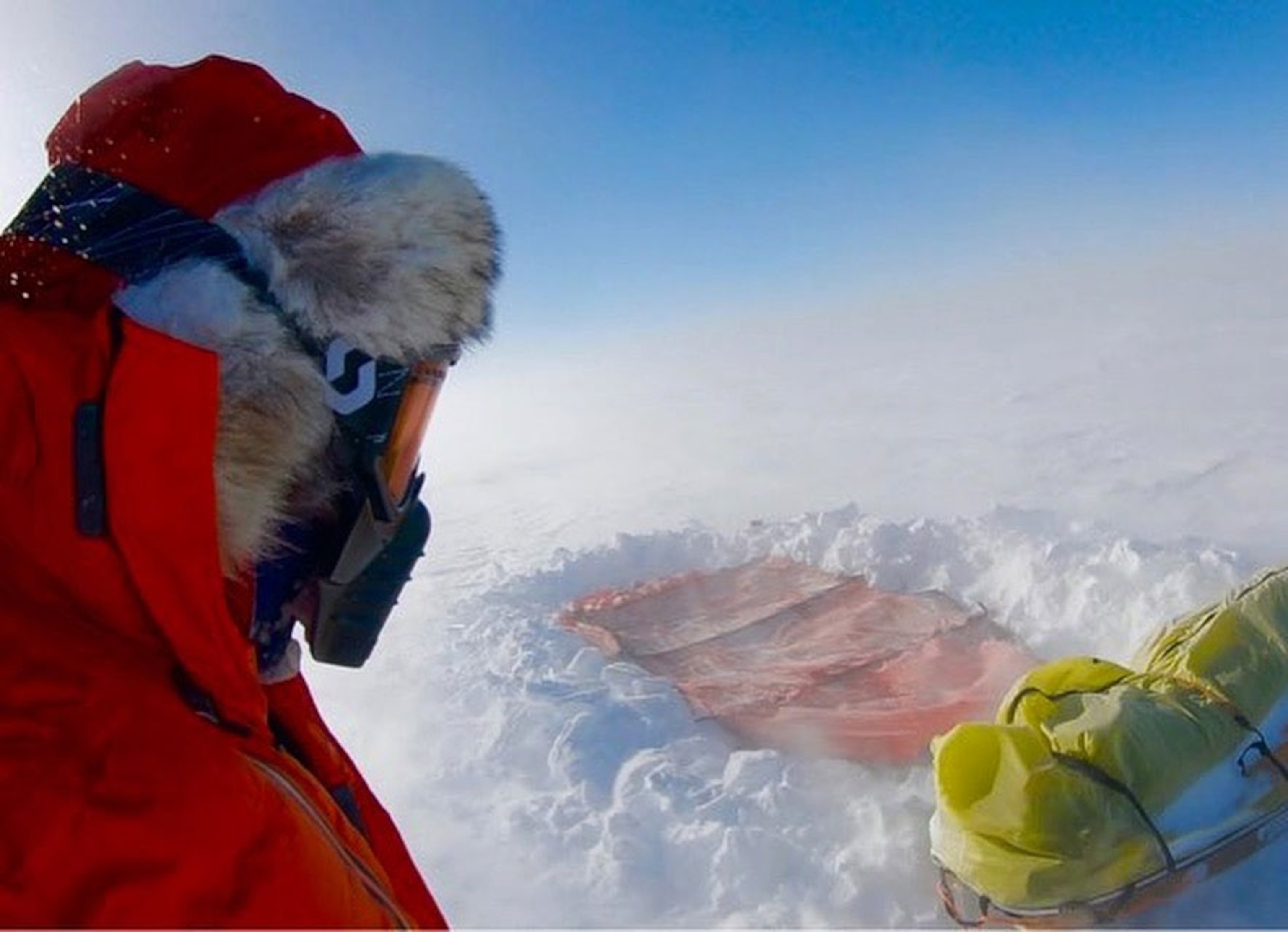
Even with his calorie-intensive strategy, O’Brady admitted he was still losing weight. “I am afraid to take a close look at my body,” he said. “My calves feel more like the size of my arms...my watch is starting to slide around on my wrist.”
Suffice it to say that despite eating the same prepackaged food day after day, and week after week, there’s no danger of culinary burnout. When asked if he was tiring of his food, Rudd didn’t hesitate, “No, I need more of it. I wolf it down and relish every bite. I could eat double the amount now.” He estimated he’s lost well over 20 pounds since setting out and noted, “I’ve got abs for the first time in a very long time.”
The two increasingly svelte men are also climbing to the highest elevations of their shared route as they shuffle with oxygen-starved lungs across the Hercules Dome at 9,600 feet, which due to the pole’s lower barometric pressure feels comparable to a North American elevation thousands of feet higher. O’Brady discussed the challenge in his December 18 post, “I have been really feeling the burn up here...Due to my notable muscle loss, many of my daily tasks that were once so simple, like shoveling snow and setting up my tent and moving my duffle bag inside, leave me completely exhausted and panting for more oxygen.”
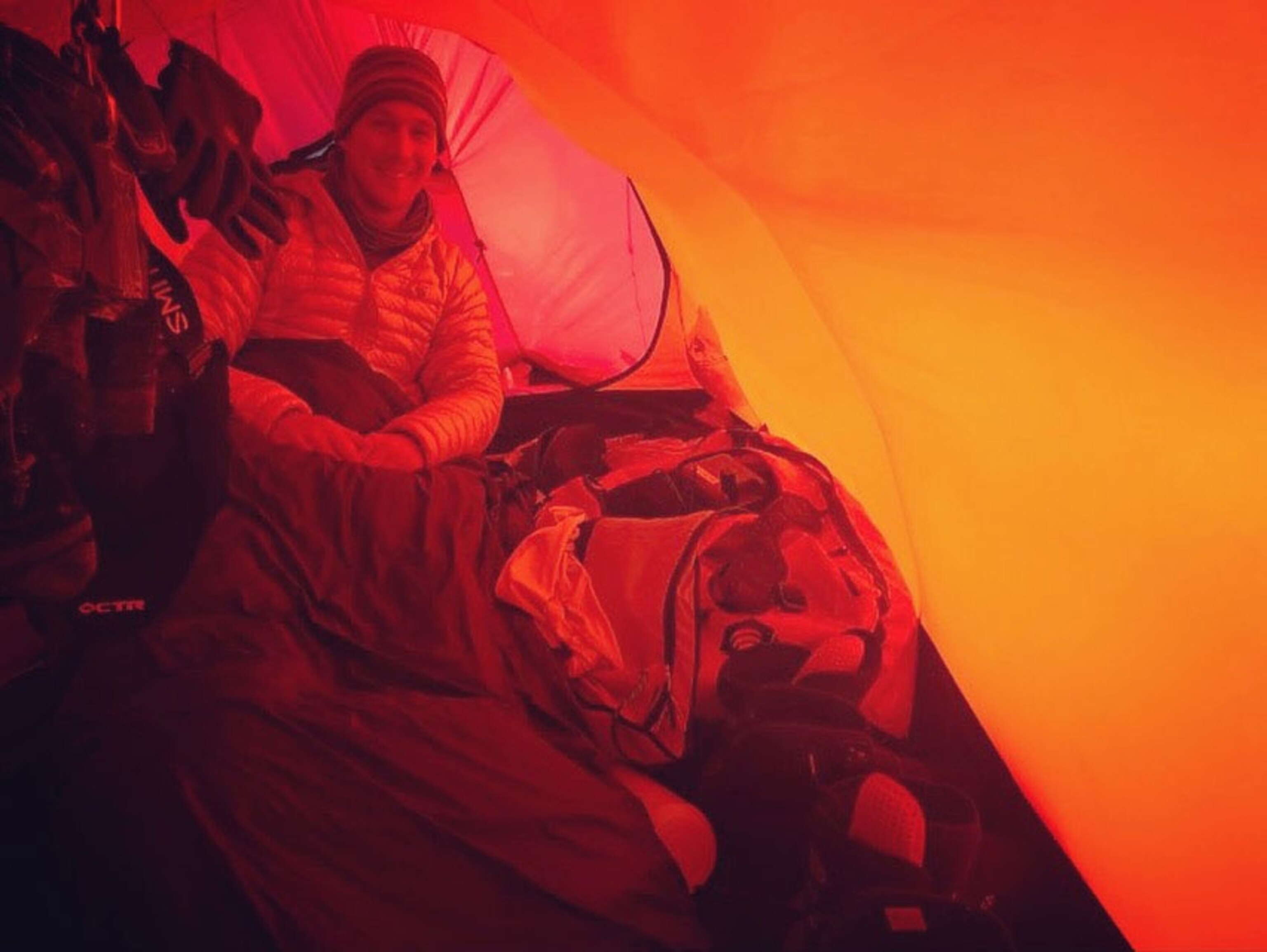
Besides chicken legs, shrinking physiques, and thin air, Antarctica’s unrelenting cold is extracting myriad tolls on both men. Each are using super glue to fill the multitude of cracks forming on their fingers and thumbs. But it’s the mouth bleeding and intense pain it caused Rudd whenever he drank or ate that appeared poised to possibly end his traverse attempt. Though the condition is likely caused by the unending subzero temperatures and high winds, on a doctor’s advice Rudd began taking precautionary antibiotics from his first-aid kit. Fortunately, a weather shift in recent days has helped. After the pole, winds weakened and benevolently blew at the skier’s backs for several days, allowing Rudd’s oral wounds to stabilize for the time being.
Despite the hardships, both men have covered their biggest daily mileages in recent days. This is largely due to their ever-lightening pulks and a multi-day stretch of benign weather. Mild tailwinds blew beneath diamond-flecked blue skies, with sunlight refracting through airborne ice crystals to create varicolored halos, like ice rainbows, around the sun. The timing couldn’t have been better—both men left humanity’s outpost at the pole with approximately 20 days of food to reach their end point on the Ross Ice Shelf. This requires they average 18 miles per day, well above the 14 miles they averaged over the 40 pre-pole days. So far, each are notching upwards of 20 miles per day.
“If all goes well, I could complete this expedition in 19 days,” Rudd reported. “I’m staying positive, I’m digging deep, and hopefully, if I can pull this off, then it’ll be absolutely incredible.”
With the trip’s bitter weather conditions easing, it appeared as if the biggest issue the two skiers faced in the last third of their mission could be psychological. Rudd admitted the sheer isolation and length of the trip were wearing on him. “It’s going on forever,” he said wearily. “The monotony is definitely starting to get to me, especially being alone.”
Then came December 19th, the expeditions’ 47th day. The winds arrived at night, blasting the thin-walled tents. A jangled O’Brady wrote, “My anxiety started building...the rattling of my tent kept me up and I began to get more and more nervous.”
By morning the wind was screaming at 50 miles-per-hour. Visibility was nonexistent. The smart move was to stay in the shelter of the tent, but the forecast predicted a multi-day storm and neither man had enough food to wait it out. O’Brady set off into a complete whiteout, or what notable polar explorer Eric Larson calls, “life sucking voids of nothingness.” It did not help that O’Brady was heading into an area informally known as Sastrugi National Park, a 100-mile zone dreaded for its strong winds and proliferation of waist-high snow ridges. Due to the sastrugi density, potential rescue planes, which require smooth “runways” of snow, cannot land here. After O’Brady, unable to see the terrain beneath his skis, fell five times in the first hour he began to worry, “What if I broke a bone or a ski?”
Convinced it was too dangerous to carry on, he carefully set up his tent, crawled in, and let his mind thrash out his limited options. Staying in the tent for days held its own dangers. “I went to battle hard with my personal demons today,” he wrote in an Instagram post, admitting, “My mind was ripping me apart.” A practiced meditator, he closed his eyes and spent a few minutes calming himself. Then he got up, packed his tent, and proceeded to ski the rest of the day in a 50-below Fahrenheit windchill, covering 21 miles.
Meanwhile, after weighing the same equation shortly after waking, Rudd also decided to charge into the maelstrom. It was almost too cold to stop, so he skied, with little food or water, for 13 straight hours. The storm only worsened and at eight at night he finally realized he couldn’t put off pitching his tent any longer. “If you rip the tent apart here, or even worse, lose control, you’re instantly into a life-threatening situation in these conditions,” he wrote on his trip log. With great care, laying across it to hold it to the frozen Earth, he was able to erect his nylon shelter against the storm. Once safely inside, he looked at his GPS for the first time. He’d skied 23 miles, his biggest day of the expedition.
As of this writing, O’Brady is still 35 miles ahead of Rudd, and for roughly the next five days, the men will be in the no-rescue zone. Both vow to continue battling across the great white expanse, two fragile humans, atoms on ice cubes, traveling alone across the frozen continent.



